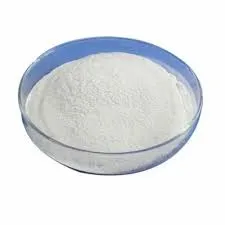
Dec . 17, 2024 05:19 Back to list
hydroxyethyl cellulose solubility
Understanding Hydroxyethyl Cellulose Solubility Applications and Implications
Hydroxyethyl cellulose (HEC) is a non-ionic, water-soluble polymer derived from cellulose, a natural polymer. Its modification involves the introduction of hydroxyethyl groups, which significantly enhance its solubility in water compared to its parent cellulose. The solubility characteristics of HEC make it a crucial ingredient across various industrial applications, particularly in pharmaceuticals, personal care products, and food industries.
Structure and Properties
Hydroxyethyl cellulose is characterized by its unique molecular structure, which consists of long chains of glucose units that have been chemically modified. The hydroxyethyl groups that replace some of the hydroxyl groups of the glucose units render the polymer soluble in water. The degree of substitution (the average number of hydroxyethyl groups attached to each glucose unit) plays a critical role in determining the solubility, viscosity, and other physical properties of HEC. Generally, higher degrees of substitution lead to lower viscosity solutions at a given concentration, making HEC versatile in formulation.
Solubility Behavior
HEC dissolves readily in cold or hot water, resulting in a clear and viscous solution. The solubility of HEC can be influenced by several factors including temperature, pH, and the presence of electrolytes or other solutes. Increasing the temperature often enhances solubility, while extreme pH levels may cause precipitation or reduced solubility due to hydrolysis. Furthermore, the presence of salts can affect the solubility by screening electrostatic interactions between polymer chains, a phenomenon that is essential in formulating HEC solutions for various applications.
Applications in Various Industries
hydroxyethyl cellulose solubility

1. Pharmaceuticals In the pharmaceutical industry, HEC is employed as a thickening agent, binder, and film-forming agent in various drug formulations. Its solubility profile is particularly beneficial in the formulation of controlled-release drugs, where it helps regulate the release of active pharmaceutical ingredients (APIs) over time. HEC's biocompatibility and non-toxic nature make it suitable for use in both topical and oral preparations.
2. Cosmetics and Personal Care Due to its ability to modify viscosity and provide a smooth application, HEC is commonly used in cosmetic products such as creams, lotions, and gels. Its solubility allows for easy incorporation into aqueous formulations, contributing to the desired texture and stability of the final product. HEC also acts as a stabilizer in emulsions, helping to prevent separation of oil and water phases, thus enhancing the overall quality and shelf life of personal care items.
3. Food Industry In food applications, HEC serves as a thickening agent, stabilizer, and emulsifier. Its solubility in water facilitates its integration into various food systems, where it can improve texture and mouthfeel. HEC is particularly valuable in products like salad dressings, sauces, and baked goods, where it helps maintain consistency and prevent ingredient separation.
4. Construction HEC is also utilized in construction materials such as cement, mortar, and tile adhesives. Its water retention properties improve the workability and adhesion of these materials, and its solubility ensures uniform distribution throughout the mixture, enhancing performance during application.
Conclusion
Hydroxyethyl cellulose is a highly versatile polymer with significant solubility attributes that cater to a broad array of industries. Its integration into pharmaceuticals, cosmetics, food, and construction illustrates its multifaceted role in improving product quality and performance. Understanding the solubility characteristics of HEC is vital for formulators to harness its full potential, leading to innovative solutions that meet consumer demands and regulatory standards. As research continues to explore its properties and applications, HEC is poised to play an even more significant role in future advancements across multiple sectors.
-
Versatile Hpmc Uses in Different Industries
NewsJun.19,2025
-
Redispersible Powder's Role in Enhancing Durability of Construction Products
NewsJun.19,2025
-
Hydroxyethyl Cellulose Applications Driving Green Industrial Processes
NewsJun.19,2025
-
Exploring Different Redispersible Polymer Powder
NewsJun.19,2025
-
Choosing the Right Mortar Bonding Agent
NewsJun.19,2025
-
Applications and Significance of China Hpmc in Modern Industries
NewsJun.19,2025







